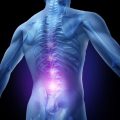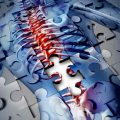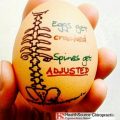People often mistake, if not interchange bulging disc with herniated disc. However, there is a huge difference between the two. The latter refers to a crack or rupture on the outer layer of the spinal disc. This crack causes the spinal fluid to slip out of the disc and affect the surrounding areas of the damaged disc, including the nerves, which results to pain. Bulging disc in back on the other hand, is simply a bulge on the outside of the disc, no cracks or rupture. However, it can cause mild discomfort, tingling sensation, weakness and numbness that can go down to the shoulders, arms and fingers. In some cases, it may not cause pain at all. But when left untreated, it develops to herniated disc.
Causes of Bulging Disc in Back
Along with other health and physical conditions that comes with ageing. It is considered normal, as daily activities and repetitive movements that put pressure on our body can really cause wear and tear in its various parts. This is not always a sign of a serious problem to the spine.
It in back only becomes serious when the bulging causes the narrowing of the spinal canal. When bulging disc becomes serious, it causes bone spurs, which presents a whole lot of problems for the spine as it grows behind the it. Doctors sometimes call this segmental spinal stenosis.
Misuse, overuse and injury to the intervertebral disc are common among athletes and people who do physical job with stressful repetitive movements. It can weaken the disc and risking people to various spinal disc problems. Also, cigarette smoking contributes to the deterioration of the spinal disc.
Bulging Disc in Back Symptoms
Though it may sound like a very scary medical condition, it is actually a common problem among young adults and older individuals, and should not always cause panic. If the bulging of the disc presses on the nerve, the common symptoms will be numbness, muscle weakness, and pain. Also, depending on which of the nerves have been affected, the pain can make people think it the problem comes from different part of the body, such as kidneys, abdomen, and most commonly, the heart, especially if it’s already a case of herniated disc.
Other common symptoms that occur from itpressing the spinal cord are:
- Bulging disc on thoracic spine
– Changes in bowel or bladder functions
– Increased reflexes in legs (one or both) which leads to spasticity (an abnormal increase in muscle tone or muscle stiffness that affects the mobility).
– Muscle weakness
– Numbness or tingling sensation in one or both legs
– Lower body paralysis (from waist down)
- Bulging disc on cervical spine
– Pain when moving the neck
– Deep pain over or near the shoulder blades
– Pain that radiates down to the arms, forearms, and even fingers
Bulging disc in back may start small and gradually gets worse over time, or when dong certain activities that puts the spinal disc at risk. Many times however, these symptoms get better within a few weeks or months of rest.






 I love to write medical education books. My books are written for everyone in an easy to read and understandable style.
I love to write medical education books. My books are written for everyone in an easy to read and understandable style.